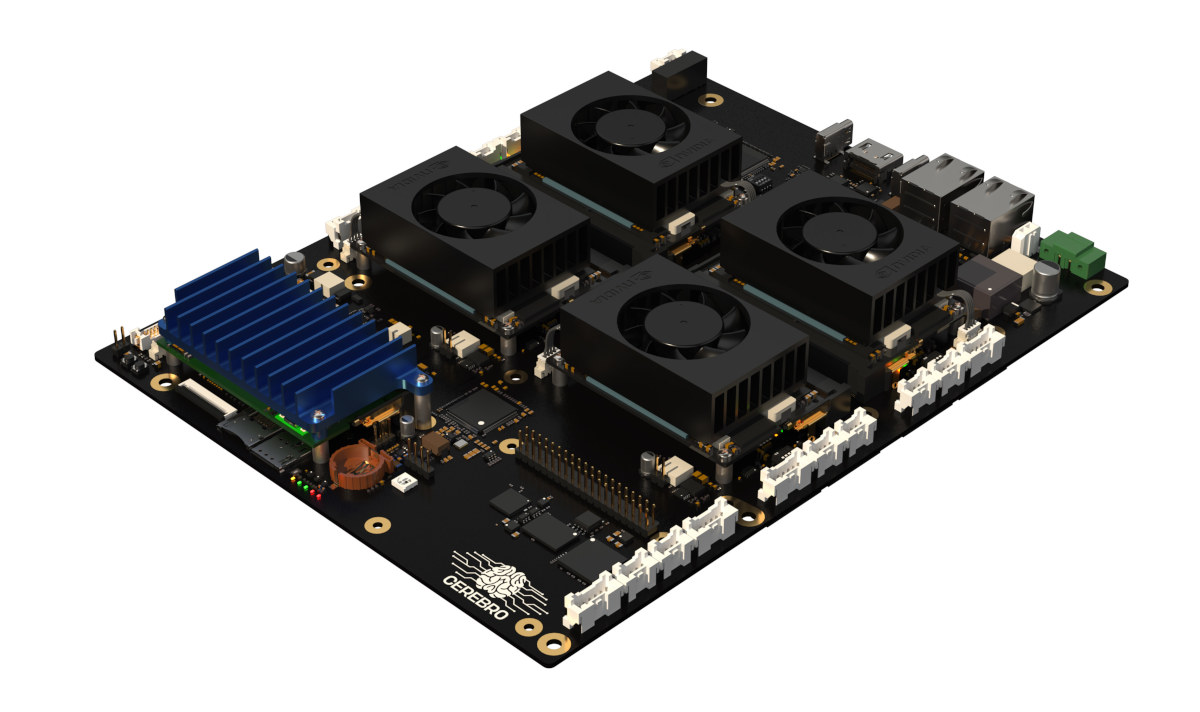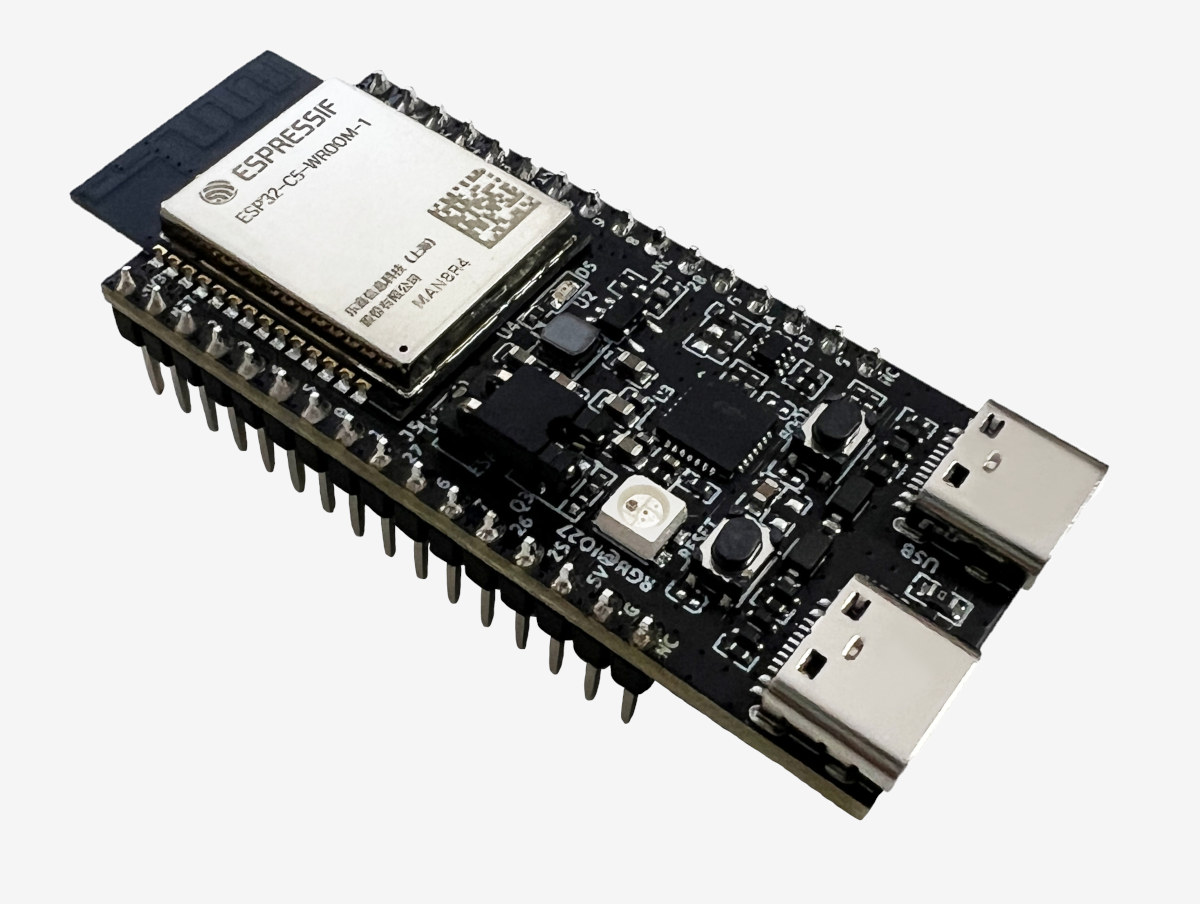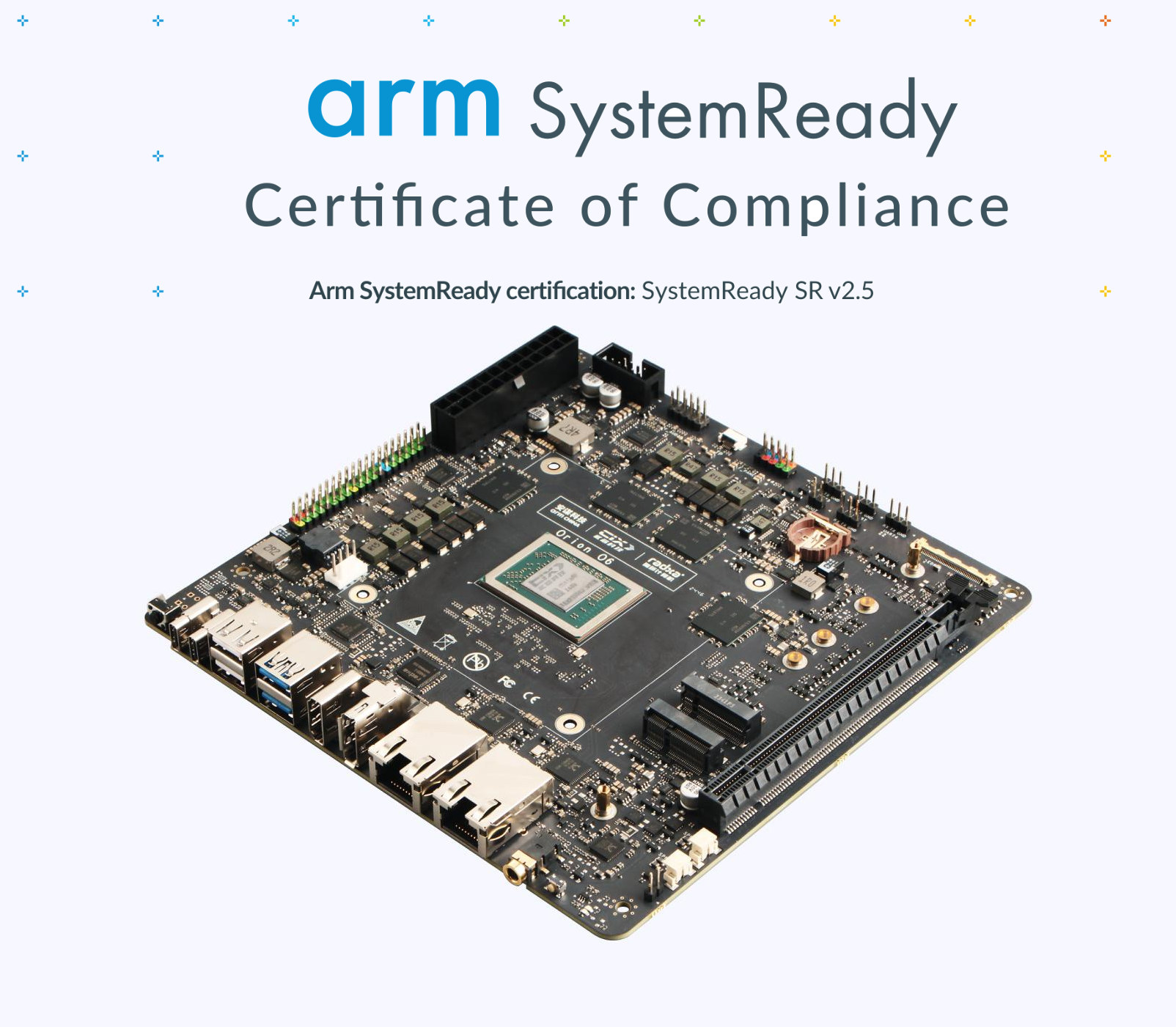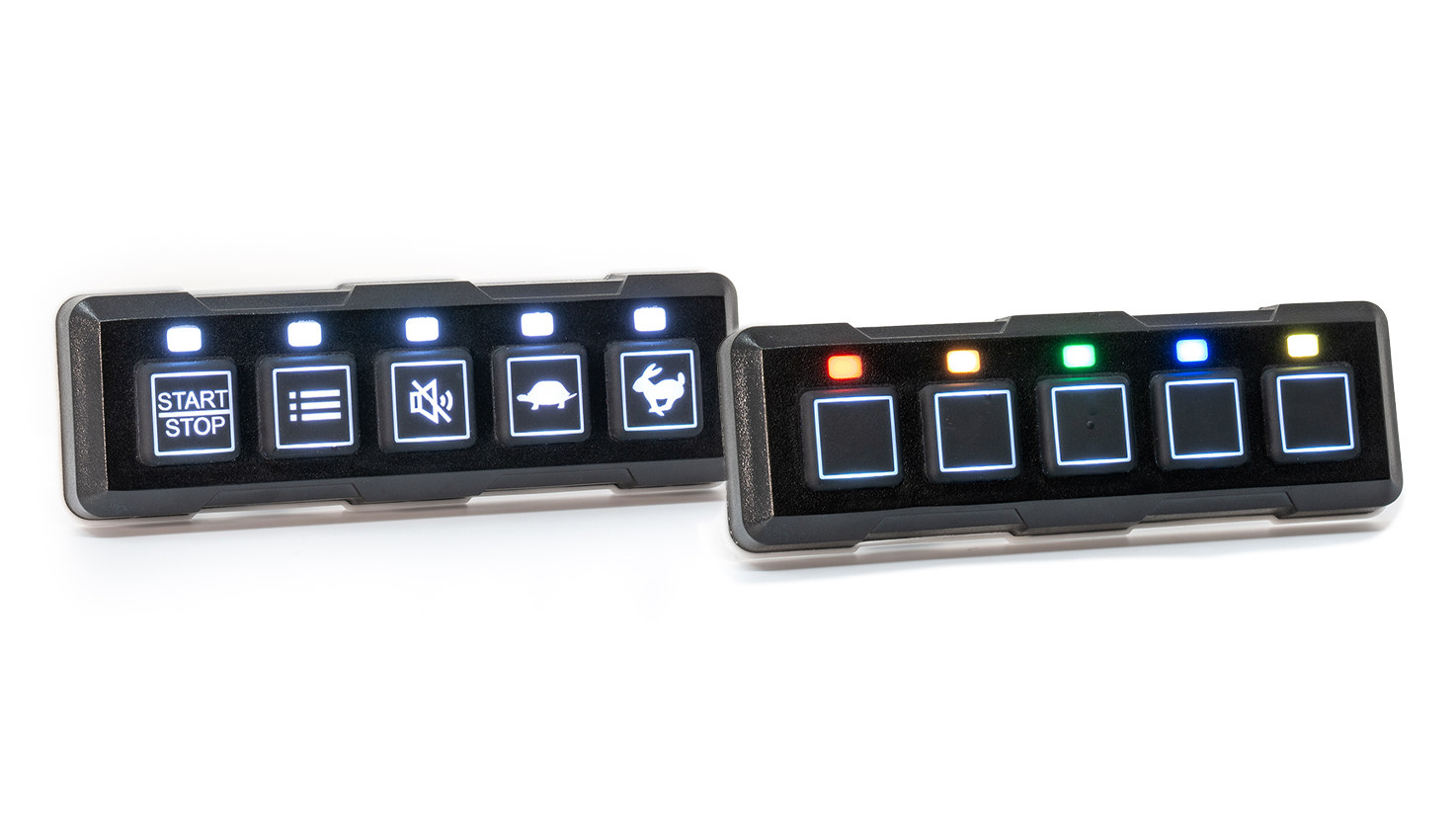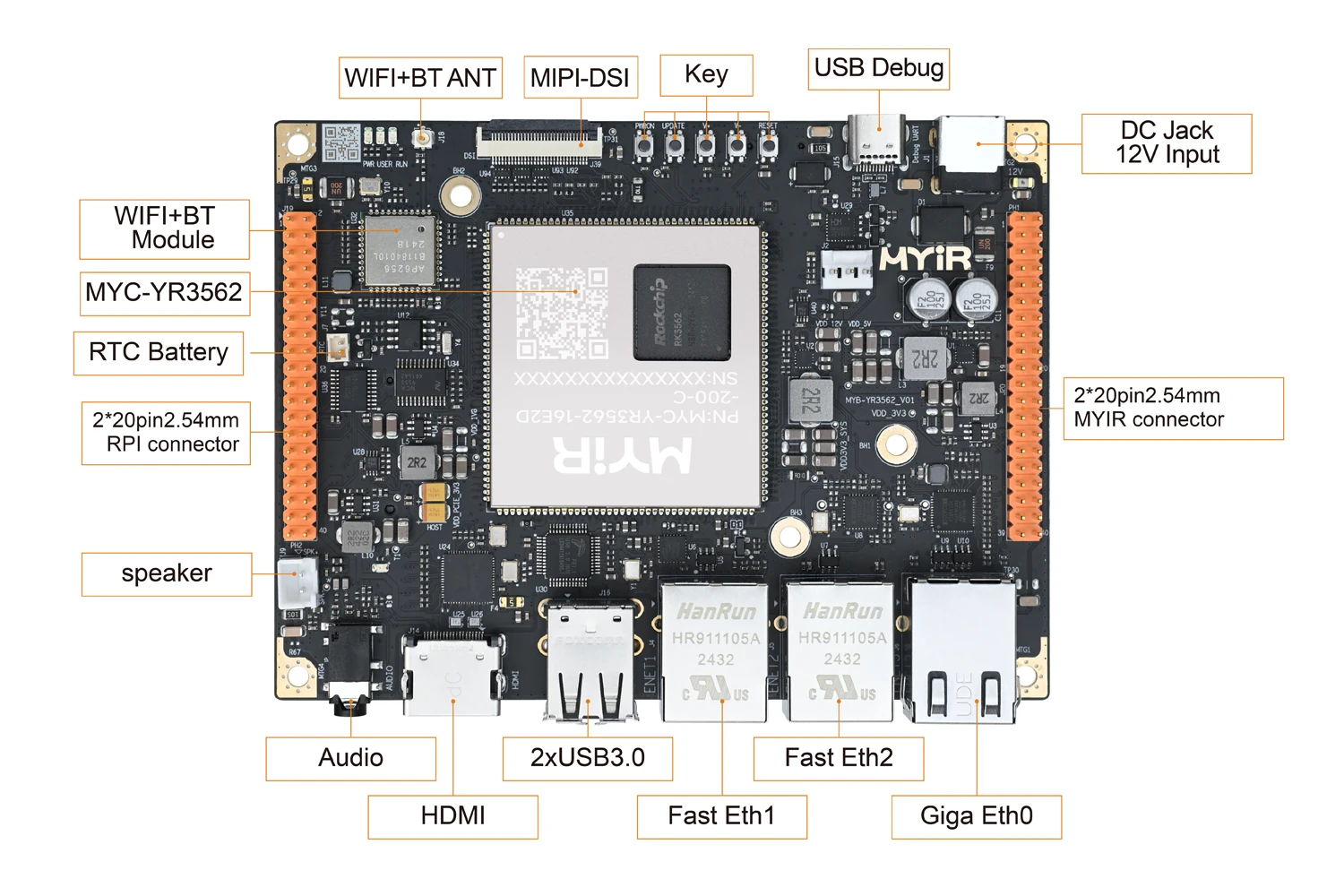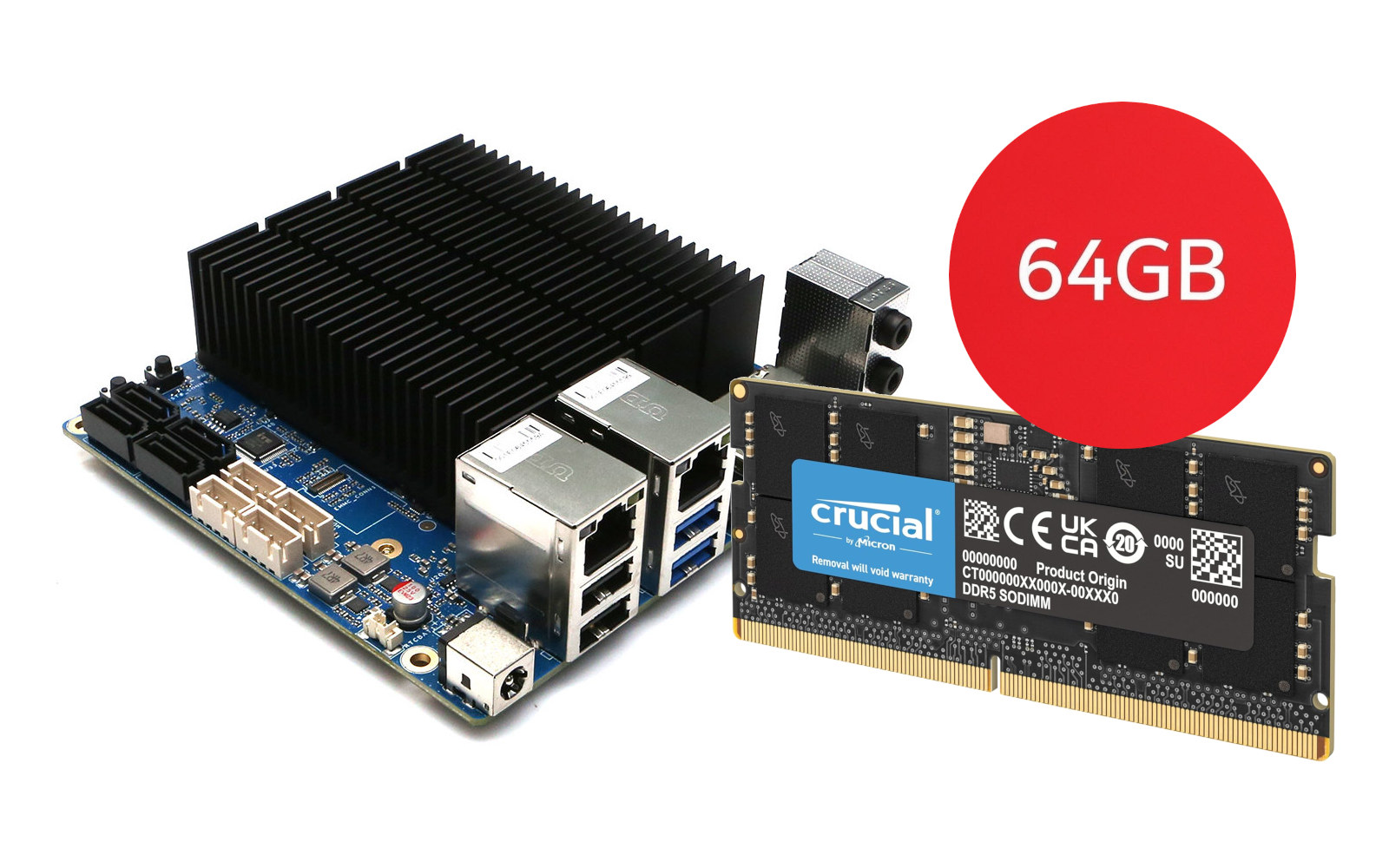Cerebro is a modular board / clusterboard designed to take up to four system-on-modules such as NVIDIA Jetson SO-DIMM modules, Raspberry Pi CM4 or CM5, or Radxa CM5. The board integrated a BMC for intercommunication between the CPU modules. The Cerebro was designed out of frustration as the team at Sparklab Solution could not find a solution where boards would work together seamlessly. While there are other clusterboards for Raspberry Pi Compute modules, the Cerebro motherboard provides more flexibility with three M.2 sockets per node, a built-in BMC and optional expandable BMC, KVM support between each node, dual Ethernet, a 10 Gbps USB 3.2 port, and more. Specifications: Compute Modules 4x SODIMM-260 slots Compatibility Nvidia Jetson Orin NX/Nano Raspberry Pi CM4/CM5 via adapter Radxa CM5 via adapter Supports mix and match of different models Storage 2x M.2 key-M slots per node (8x in total) for NVMe SSD 1x MicroSD card […]
ESP32-C5 dual-band WiFi 6 SoC enters mass production, ESP32-C5-DevKitC-1 board launched for $15
Espressif Systems has just started mass production of the ESP32-C5 RISC-V wireless microcontroller with dual-band (2.4/5 GHz) WiFi 6, Bluetooth LE, and 802.15.4 (Zigbee, Thread) connectivity. The ESP32-C5-DevKitC-1 development is now available for about $15 on AliExpress, and should soon show up on the company’s Amazon store. So far, WiFi-capable Espressif microcontrollers have only supported 2.4 GHz WiFi since it’s cheaper and offers better range for IoT applications, but some applications may benefit from 5 GHz WiFi, so the company unveiled the ESP32-C5 dual-band WiFi 6 and BLE RISC-V MCU in June 2022. Design probably took longer than expected, but we noted documentation for an ESP32-C5 beta board in March 2024, and finally, the company has just announced that mass production has started. We’ll have a closer look at the ESP32-C5-DevKitC-1 board in this article, since it is different from the beta board. ESP32-C5-DevKitC-1 specifications: Wireless module – ESP32-C5-WROOM-1 SoC […]
New color e-paper monitors – 13.3-inch DASUNG Paperlike 13K and 23.5-inch BOOX Mira Pro Color
Back in 2023, DASUNG launched its first color E-Ink monitor, quickly followed by BIGME B251 computer and standalone E-Ink monitor. Both were based on the same 23.5-inch E-ink Kaleido 3 color display with 3200×1800 resolution, and were rather pricey at $1,529 (Indiegogo price) and $1,299 (Kickstarter price), respectively. Let’s revisit color e-paper monitors in 2025 with two new models that were just announced: the DASUNG Paperlike 13K 13.3-inch e-ink color monitor and BOOX Mira Pro (Color version) with the same 23.5-inch E-Ink Kaleido as competing monitors launched in 2023. Those monitors are particularly well-suited for people spending long hours in front of the screen, and don’t need to watch video and play games due to the lower refresh and ghosting effect. It’s supposed to be friendlier to eyes, and there’s no blue light. DASUNG PaperLike 13K – 13.3-inch e-ink color monitor Paperlike Paperlike 13K (13KCFT) specifications: Display 13.3-inch Color E-ink […]
Radxa Orion O6 mini-ITX motherboard gets Arm SystemReady SR v2.5 certification
Radxa Orion O6 mini-ITX motherboard powered by a CIX P1 12-core Cortex-A720/A520 SoC has just obtained Arm SystemReady SR (ServerReady) v2.5 certification, meaning it’s been shown to run unmodified several OS images such as Windows and Ubuntu. I’ve already tested a Debian 12 image modified by Radxa on the Orion O6, but one of the goals of the platform was to provide a universal UEFI + ACPI firmware to boot any Arm ISO released by OS vendors, for instance, the Ubuntu Desktop ISO for Arm 64-bit architecture downloaded directly from the Ubuntu website. The Arm SystemReady SR certification is a step in the right direction, as it means the Orion O6 has passed a number of tests showing it can boot several off-the-shelf OS images. We’ll find Radxa’s Orion O6 listed on the Arm SystemReady Compliance page among boards from other manufacturers, as well as the Radxa ROCK Pi 4B+, […]
IP67-rated Helios SK51 CAN Keypad adds five programmable RGB tactile buttons to CAN Bus applications
Helios SK51 CAN Keypad is a waterproof (IP67-rated) keypad connected over CAN Bus with five tactile silicone buttons and LED backlighting. Each button is fully programmable and offers a 24-bit RGB color option. In some ways, it reminds me of the T-Keyboard-S3-Pro mechanical keypad, but instead of relying on USB, the SK51 CAN Keypad works over a CAN Bus compliant with the SAE J1939 standard, and it’s designed for more demanding environments. Helios SK51 specifications 5x programmable buttons with integrated display, each with a status LED on top. CAN protocols SAE J1939 compatible protocol Transmit – Button status on press/release or 1s interval Receive Simple Mode: Set backlight & status LED colors, brightness, and flash Full RGB: 24-bit RGB per LED (16.7 million colors) CAN Termination – Not Fitted USB – USB-C for firmware update Supply Voltage – 6 to 35 VDC Power Consumption – 5 to 200mA, depending on […]
Small (45x43mm) system-on-module packs Rockchip RK3562 AIoT SoC, 16GB eMMC, 2GB RAM, and PMIC
MIYR Tech MYC-YR3562 is a small 45x43mm system-on-module that packs a Rockchip RK3562 or RK3562J quad-core Cortex-A53 AIoT SoC with a 1 TOPS AI accelerator, up to 2GB LPDDR4, 16GB eMMC flash, 32 Kbit EEPROM, and a PMIC. To keep the module small while making no compromise on the number of I/Os offered, the company designed the module with 164 castellated holes (LCC – ) and 58 pads (LGA). That means the MYC-YR3562 system-on-module gets all interfaces from the RK3562(J) SoC, including Gigabit Ethernet, USB 3.0, PCIe 2.1, RGB, LVDS, and MIPI-DSI interfaces, camera inputs (MIPI-CSI), and a range of low-speed I/Os. MYC-YR3562 SoM specifications SoC – Rockchip RK3562 or RK3562J CPU RK3562 – Quad-core Arm Cortex-A53 quad-core @ 2.0 GHz RK3562J – Quad-core Arm Cortex-A53 quad-core @ 1.2 GHz (stock, overclock up to 1.8 GHz) GPU – Mali-G52-2EE with support for OpenGL ES 1.1/2.0/3.2, OpenCL 2.0, Vulkan 1.0/1.1 AI accelerator […]
64GB DDR5 memory modules shown to work on ODROID-H4 Alder Lake-N SBC
The ODROID-H4 SBC powered by an Intel Processor N97 or Core i3-N305 Alder Lake-N CPU has been shown to work with up to 64GB DDR5 since Crucial/Micron released such modules earlier this year. There’s always been a lot of confusion about the maximum memory supported by Alder Lake-N CPU, mostly due to Intel Ark, which should be a trusted official source, but that will often wrongly report a maximum of 16GB RAM: But people quickly found out that 32GB RAM would work just fine, and the guys at Hardkernel even tested several 48GB RAM modules successfully when they launched the ODROID-H4/H4+/H4 Ultra single board computers last year. But domih noted that 64GB DDR5 SO-DIMM modules were now available, and several members of the odroid forums purchased 64GB CT64G56C46S5 DDR5 memory modules to give it a try. It worked for them. Pugglewuggle further added that IBECC worked too, and with faster […]
Muse Pi Pro is a feature-packed, credit card-sized SpacemIT M1 RISC-V SBC with HDMI, GbE, 4x USB, M.2 and mPCIe sockets
Muse Pi Pro is a feature-packed, credit card-sized SBC powered by the SpacemIT M1 octa-core 64-bit RISC-V AI SoC with a 2 TOPS NPU and equipped with up to 16GB LPDDR4x and 128GB eMMC flash. The single board computer features gigabit Ethernet and a WiFi 6 + Bluetooth 5.3 module for connectivity, HDMI and MIPI DSI display interfaces, two MIPI CSI interfaces, a 3.5mm audio jack, four USB 3.0 ports, an M.2 socket for an NVMe SSD or wireless module, a mini PCIE socket for WiFi and 4G LTE/5G cellular connector, and a 40-pin GPIO header for expansion. That’s quite a lot of features for such a compact board. Muse Pi Pro specifications: SoC – SpacemiT M1 (similar to SpacemIT K1, but clocked at 1.8 GHz) CPU – 8-core X60 RISC-V processor @ 1.8 GHz GPU – Imagination IMG BXE-2-32 with support for OpenGL ES3.2, Vulkan 1.2, OpenCL 3.0; 20 […]


